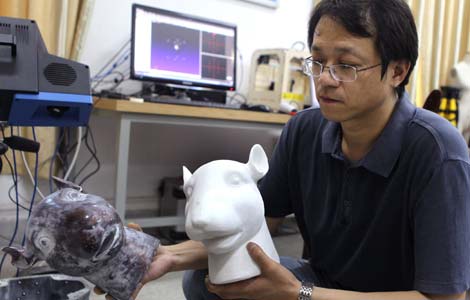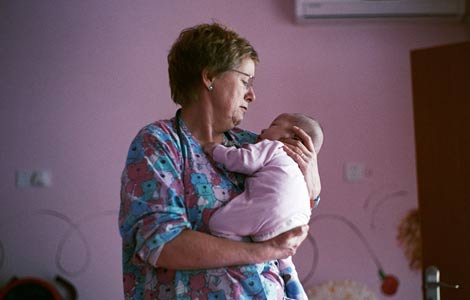Holding onto history
Updated: 2013-08-14 00:24
By Liu Wei (China Daily)
|
|||||||||||
In the field
A photography team usually includes a photographer, three assistants and a quality supervisor who ensures the right focus and size.
They divide the murals into small pieces, each 31 by 47 cm and take photos of them. According to Sun, one square meter of mural needs about 60-70 photos.
 |
|
Workers from Dunhuang Academy's digital center examine murals on computer.Chen Xi / For China Daily |
Once the photos have been taken, there is a long, drawn-out process to piece them together using a computer. Sun says 688-square-meter Cave 61 took two and a half months to photograph and about seven months to piece together on the computer.
The cooperation with Northwestern University ended in 2003. Yet the academy has not stopped improving the technology and digitization process. The tracks used to only be available in one size, now the digital center develops tracks of three different widths to suit different caves. The cameras used to only work with regular light, but now only cold light can be allowed to protect the murals.
The conservation work was greatly enhanced in 2011 when Microsoft Research Asia donated a video camera with a resolution of 1.3 billion pixels, to the academy. The two institutions started to develop the camera in 2010.
The academy divides the caves into four categories according to cultural importance. Sun's team expects to digitize all the 147 A-list caves by 2015.
The digitization is a time-consuming project, but it is urgent, too. The contradiction bothers Sun and his team members.
"We would love to digitize the murals as soon as possible, especially when we see the effects of the destructive earthquake in 2008 in the neighboring Sichuan province," Sun says. "But to accelerate the project means having more people in the cave at the same time, which harms the fragile murals, too."
Today's Top News
Dutch Prince Friso dies after 2012 avalanche
China's gold consumption surges in H1
Blacklist, life bans proposed for doctors
China's investment in UK is 'strong'
Equities take a benefit from improving data
Firm denies its funds financed judges' prostitutes
H7N9 patient dies in Beijing
Former premier launches 3rd book
Hot Topics
Lunar probe , China growth forecasts, Emission rules get tougher, China seen through 'colored lens', International board,
Editor's Picks

|

|

|

|

|

|





